Gigabyte GA-Z77X-UD5H Review: Functionality meets Competitive Pricing
by Ian Cutress on July 25, 2012 5:00 AM EST- Posted in
- Motherboards
- Gigabyte
- Z77
Gigabyte GA-Z77X-UD5H Software
Gigabyte motherboard software has been stagnant for a couple of generations now - nothing new to the plate, and the same interfaces greet us every installation. The only item that ever changes is the stability, and the ability of these programs to work with new chipsets. Alas, that remains true of the Z77X-UD5H.
The default CD installer gives the user the one-click option to install all drivers, and offers users to install relevant software as well. There is one drawback here - some of the more esoteric software (3D Power, @BIOS) is not installed. These have to be installed one-by-one manually by navigating through. However, a user may not ever notice this software, as after installation and reboot, the CD installer does not re-emerge. Odd.
EasyTune6
The main heart of Gigabyte's software package, as it has been for a while, is EasyTune6. This sort-of centralized bit of software allows users to adjust many of the CPU BIOS settings from software, as well as examine their system and adjust fan controls.
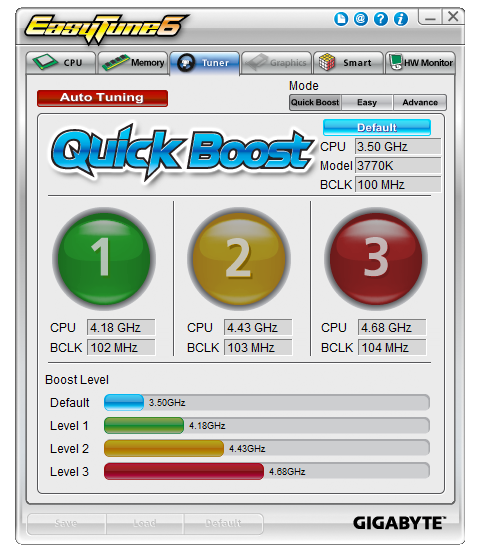
The first screen offers the user a series of pre-determined overclocks, hard written into the program. Our successes with these are varied, as will be explained in the overclocking section. The "Auto Tuning" option in red has nothing to do with adjusting sound (a la AutoTune), but attempts to manually increase the CPU speed according to temperature sensors and stress testing. Again, our experiences with this are detailed in the overclock section. Users can navigate to the 'Easy' and 'Advanced' sections for more detailed and specific options relating to speeds and voltages.
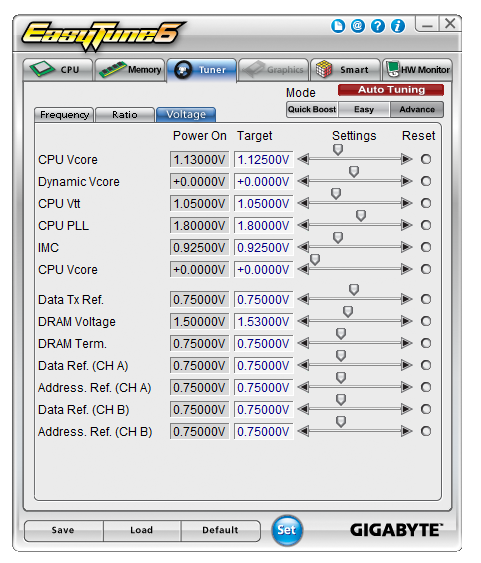
Aside from the monitoring software, EasyTune6 also allows for fan manipulation under the "Smart" tab:

These are very basic fan controls, with a very basic graphical representation. On the Z77X-UD5H, the CPU fan and the SYS fans can be controlled in groups. This means that the SYS fans are all controlled at the same time. When put head-to-head against the best motherboard fan controls available on the market, the Gigabyte board loses out big time.
EasyTune6 also has one big flaw, which has sprung up in my testing several times over the past year. Any software that includes monitoring tools has a large effect on how the CPU processes Deferred Procedure Calls (DPC). These calls are queued in line with priority - IO gets given a priority, monitoring gets given a priority, audio gets a priority. The issue comes with comparing the DPC Latency when these monitoring tools are active. In the BIOS, the monitoring tools are given high priority at the expense of everything else, causing a 20x increase in the latency of other signals, for example audio. This means that during monitoring, the audio could have a large (>3ms) direct latency between production and output. This is severely detrimental to audio fans and producers - in order to get rid of this delay, the monitoring software must be switched off. I have seen this effect with other manufacturers, not just Gigabyte, and their solution was a new BIOS which gives the monitoring tools a lower priority in the DPC process, which fixed the problem and allowed users to run the monitoring tools with no direct effect on DPC. This has been forwarded to Gigabyte, so audio enthusiasts may want to update beyond the F8 BIOS should you purchase this board.
Windows Gadgets
Along with the default install, Gigabyte decided to put two icons on the screen to install two Windows Gadgets. The first of these is for EAX Advanced HD 5.0, which rather than actually doing anything just provides some PR regarding the fact that the Z77X-UD5H confirms to the EAX 5.0 standards. The other gadget is a little more useful, being a SoundBlaster media player. This can be synchronized to a folder of choice and involves simple navigation tools.
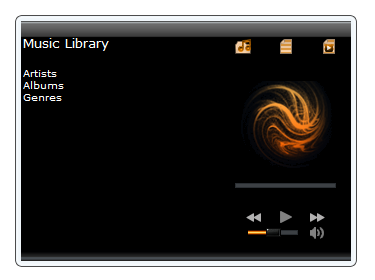
@BIOS
Gigabyte's BIOS updating tool, @BIOS, also makes an appearance. Should Gigabyte decide to perform a major BIOS update, major enough that the Q-Flash utility in the BIOS not recognize the BIOS as being for the motherboard, then users will have to resort to @BIOS. It also acts as a useful tool to check that your system is as up-to-date regarding BIOS releases.
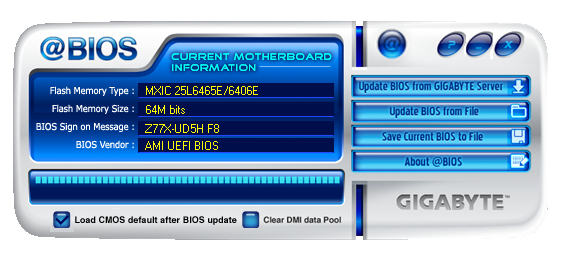
It is simple and easy to use - I have had to use it on occasion.
3D Power
The oddball in Gigabyte's arsenal of software is 3D Power. We were introduced to this utility while the 3D BIOS was still in its infancy, when 3D Power was confusing and slow. While the 3D BIOS has been updated significantly to be fast and accurate, the 3D Power software is left lagging behind, as if it was designed as part of a student's flash project.
Along with being slow and rough around the edges, 3D Power gives users the option to configure the power delivery of the motherboard. This brings up two issues - the first being that most users or enthusiasts will not be adjusting the power delivery options; and the second issue is that if an enthusiast wants to change the options, they would do so in the BIOS and not through a software utility, especially one that is slow and rough. As part of the software package, 3D Power needs a lot of work to be at least visually appealing.


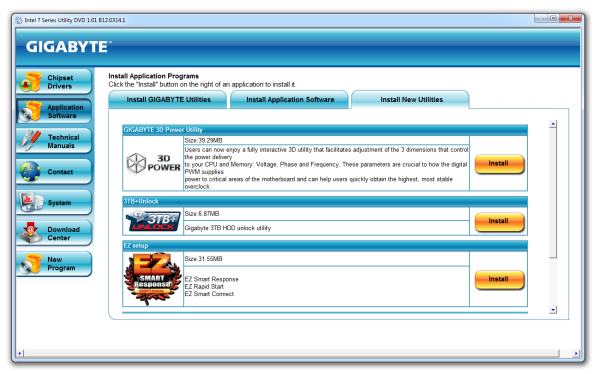
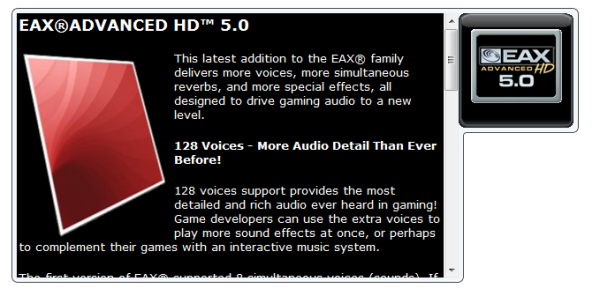
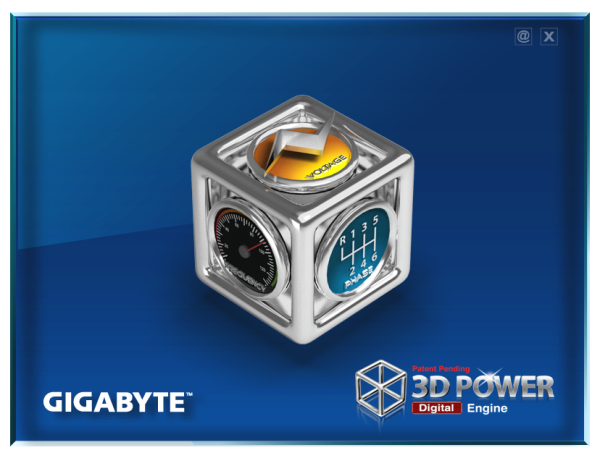














70 Comments
View All Comments
Aunt Fritzi - Wednesday, July 25, 2012 - link
I have a 3-year-old Biostar motherboard (go ahead and laugh)... it has two PS/2 ports. A PS/2 keyboard is needed to bring up the BIOS tool at startup. Is that generally the case when mobos have PS/2 ports?Samus - Thursday, July 26, 2012 - link
You need to enable "USB Legacy Keyboard" in the BIOS, and your USB keyboard will work.Samus - Thursday, July 26, 2012 - link
PS/2 has a limitation of 5 keystrokes within 250ms of each other.The ultimate test is Stepmania (DDR) where you hit many, many keys at the same time.
PS/2 is a joke for gaming or fast typing. It has no place in modern computing.
Questor - Tuesday, July 31, 2012 - link
My wife can type like lightning and mistake free. It astounds me to watch her. I made the switch from PS/2 to buying USB keyboards some years ago, she has been blowing my mind with them without missing a beat since the switch.I am not half-bad at typing and have neither of us have noticed a difference.
I am not saying you are wrong, I am just saying, we have not noticed any issues.
Einy0 - Wednesday, July 25, 2012 - link
PS/2 is dead long live USB!!!Belard - Thursday, July 26, 2012 - link
For my 1996 keyboard, the ps/2 port is a must. They don't make them like they used... my $20 keyboard is easily better made than todays $20~80 keyboards.Really, todays keyboards from MS and Logitech and most others use stickers for for the keys and have weak support. Mine is solid, heavy and will hopefully last another 10 years.
Most PS/2>USB adapters don't work.
Grok42 - Wednesday, July 25, 2012 - link
I guess I'll be the lone supporter of ps/2 as well. I haven't found a replacement for my $20 IBM KB-8923 ps/2 keyboard. I don't even consider myself a picky keyboard guy either. I don't want a cheap light piece of junk that moves around my desk as I type and I don't want some 10lb monster clickty clackety old school keyboard either. Most importantly, I like to keep the number of "shopping" and "email" buttons to a minimum. Seems that's an impossible list of needs these days.Of course, it might be possible to use this ps/2 keyboard with a ps/2 to USB converter but I haven't tried.
Belard - Thursday, July 26, 2012 - link
That IO panel is full of ports. If you need ps/2, go for a lower-end Gigabyte board. Their Z77 boards start at about $125 (or $80 in Dallas) and have ps/2 connectors.For my 1996 keyboard, the ps/2 port is a must. They don't make them like they used... my $20 keyboard is easily better made than todays $20~80 keyboards.
johnrysf - Saturday, August 4, 2012 - link
Before ya'll plunge off the road and into the weeds in the typing speed, etc. discussion that follows, let me mention that I have 2-3 ps/2 <---> USB pigtails that I've picked up free over the years. They're maybe 8" long. Perhaps this will offend your PC-related aspirations, but one of them even says "Radio Shack" on it.Life really is short. Geez.
Nickel020 - Wednesday, July 25, 2012 - link
First, nice review! I like the more in-depth single board reviews!You always point out the software situation with GB boards. While this is definitely an issue as far as fan controls goes, as far as overclocking goes, there's also the GB Tweak Launcher:
http://gigabytedaily.blogspot.de/2012/04/gigabyte-...
While not looking pretty, I actually prefer this functionality focussed UI to a fancy one (while I like the Asus UI, the clicking does get a little bit tedious when trying a lot of different settings). I don't know whether you're not aware of this software, or don't mention it for another reason, but I think you should include it in the review. Or at least mention it, so people are aware of it.
Another point is the voltage read points, which you don't mention in the review as well. I think these are actually a major selling point for overclockers, and should be mentioned, if not even used to check actual voltages versus BIOS settings. That's also an issue that I have with your UD3H/GD65 etc. review: You say that the GD65 gains voltage read points over the UD3H, yet the UD3H *has* voltage read points (even though I like MSI's implementation far better than what Asus/GB are doing).
http://www.anandtech.com/show/5793/intel-z77-mothe...
That's it for now, I'll read the complete review now :)